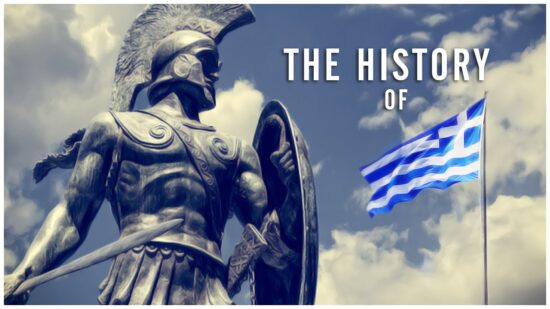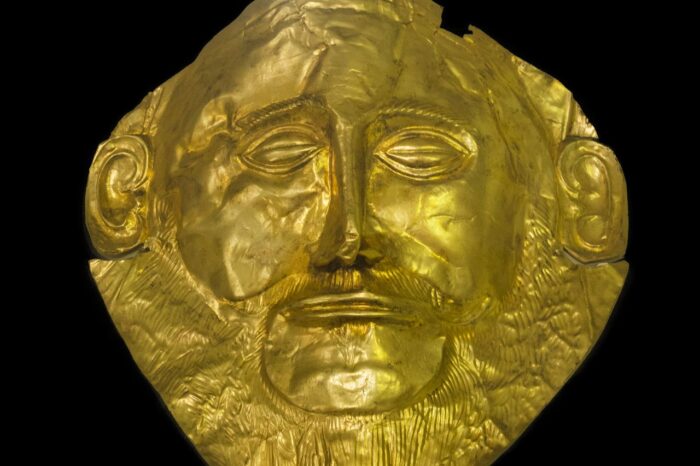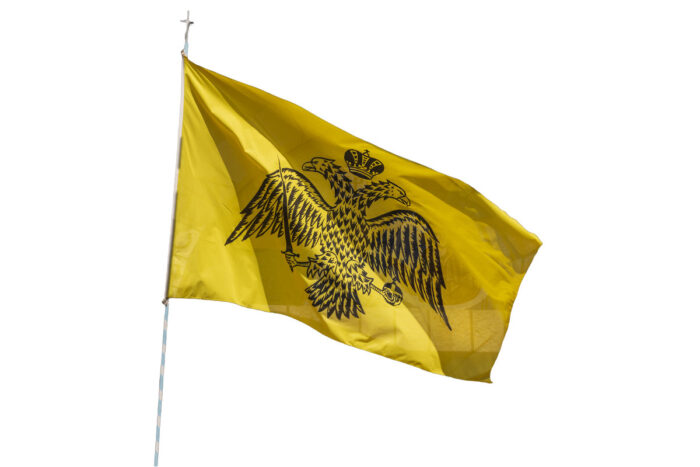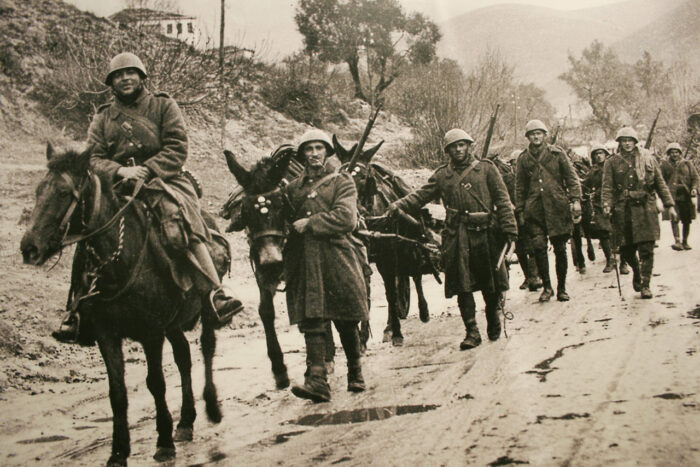Find Places of Interest, Hotels, Apartments, Restaurants, Car Rental and Services in Greece
Find Places of Interest, Hotels, Apartments, Restaurants, Car Rental and Services in Greece
Junta In Greece 1967 – 1974
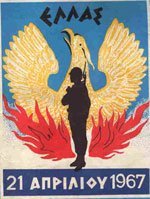
The military junta, known simply as the Junta in Greece (Χούντα στην Ελλάδα), was imposed on 21 April 1967 when army officers, led by Colonel George Papadopoulos, Brigadier Stylianos Pattakos and Colonel Nikolaos Makarezos seized power in a coup d’état.
Having positioned about 100 tanks in the Athens area, the coup leaders made their move at dawn on the 21st of April and first occupied the Ministry of Defence.
They then set Operation Prometheus in action, mobilising all the military units in Attica. The NATO emergency plan was originally intended to impose military rule in the case of a Communist uprising if Soviet forces invaded Greece.
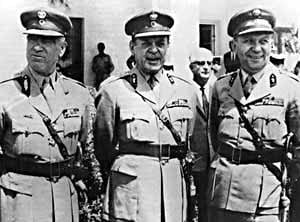
The Junta lasted seven years, during which the military dictatorship abolished all political freedoms, and imprisonments, torture and exile became an everyday phenomenon for every Greek.
The Polytechnic Uprising is considered the peak of resistance to the Junta. The sit-in at Athens University Law School in March 1973 and the uprising at the National Technical University of Athens in November of the same year shattered the climate of fear and contributed to the fall of the regime and the restoration of democracy, mainly through giving hope to the Greek people.
(Photo, from left to right: Stylianos Pattakos, Georgios Papadopoulos and Nikolaos Makarezos)
Reactions against the military junta
From 1967 onwards and throughout the dictatorship, demonstrations against the regime were held, protest banners hung in the centre of Athens and bombs set off. However, these expressions of resistance to the Junta were the exception to the rule. The arrests of innocent citizens, just for expressing views opposed to the regime and the lack of freedom, had terrorised the population and people were afraid to speak out in front of third parties. The arrests were accompanied by torture, courts-martial and internal exile to remote island camps. The Greek Military Police (ESA) and its Special Interrogation Unit (EAT-ESA) became bywords for terror and the torture of opponents of the regime.
During this time when everything “was overshadowed by menace and oppressed by slavery”, in the words of the Hymn to Democracy (the Greek national anthem), some events stand out.
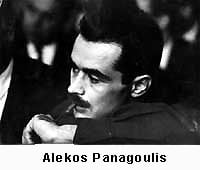
In August 1968 Alekos Panagoulis tried to assassinate Papadopoulos with a bomb, and only the resulting international outcry prevented his execution after he was sentenced to death by judges in thrall to the regime.
A few months later, in November 1968, one of the first forms of mass protest against the Junta took place: the 500,000 Athenians who attended the funeral of former Prime Minister George Papandreou yelled slogans against the Junta and sang the National Anthem and the traditional Cretan revolutionary song “Pote Tha Kanei Xasteria” (When Will the Sky Be Clear Again).
The Naval Mutiny against the Greek junta was also very important. Dozens of Greek Navy officers planned to overthrow the Junta by force of arms as early as 1968. More joined the conspiracy over the next few years. The coup was planned for 22 May 1973 but it was put off due to fears and hesitation. The Junta got wind of the conspiracy, many arrests were made and people were tortured by the EAT-ESA. The destroyer HNS Velos followed the original alternative plan in case of failure and sailed to Italy. This incident increased the number of international calls for a free, democratic Greece, but unfortunately, these were not accompanied by material aid.
Oppression, autarchy and the lack of democracy and freedom led a large section of the population to believe that the situation could not continue much longer, and demonstrations against the dictatorship began to spread after 1971. The Junta made some moves towards “legitimising” the regime, with an attempt at “democratisation” in order to forestall events.
In mid-1973 there was a general amnesty for exiled and political prisoners, and in October Markezinis was appointed Prime Minister. At the same time, strikes became more frequent and the Junta interfered with the universities in an ever more provocative manner. Both these interventions and the “democratisation” failed to control popular reactions and actually made the situation worse. The struggle against the dictatorship increased, taking on new forms.
The students took dynamic action in 1973. The students at the Polytechnic protested with continuous abstention from classes and demands for education. The Senate’s attempt to control them by closing the Polytechnic led to demonstrations at the Law School of the Kapodistrian University of Athens. There were also demonstrations in Thessalonica and other cities.
In February 1973 the Junta published a law by which the Minister of Defence could suppress the deferment of army service of students participating in the strikes, and a number of students were called up. In mid-February came the first trial sit-ins at the Law School in Athens. At the end of the month, students were arrested for anti-dictatorship demonstrations and shouting slogans during the funeral of actress Katina Paxinou. In March the Law School was occupied again and, at the Senate’s request, the police raided the building and arrested many students.
On 21 April, the anniversary of the coup, the students demonstrated in Athens with slogans against the Junta. In May came the Naval Mutiny mentioned above. In June, strikes by many workers expressed the general climate of turmoil and resistance to oppression. The strikes peaked in the autumn.
In the summer of 1973, the play “To Megalo Mas Tsirko” (Our Great Circus) by Iacovos Kambanelis was staged at the Athinaion Theatre.
Nikos Xylouris sang, and participants included Stavros Xarchakos, Kostas Kazakos, Dionysis Papayiannopoulos and Evgenios Spatharis.
Kambanelis called the play, a representation of Greek history from the Turkish occupation to the present, “A referendum for Democracy”.

In early November 1973, the memorial service for George Papandreou turned into a major demonstration against the Junta, which was broken up with beatings and arrests. On 14 November the students at the Polytechnic organised a sit-in. Slogans such as “Bread, Education, Freedom” (Ψωμί, Παιδεία, Ελευθερία), “People break your chains”, “US Out” and “Down with the Junta” were painted on banners and broadcast by the students’ amateur radio transmitter. Thousands of citizens gathered outside the Polytechnic and the dictator George Papadopoulos ordered the tanks into Athens. At three o’ clock in the morning of Saturday the 17th of November, a tank broke down the main gate of the Polytechnic and soldiers, police, secret police and armed supporters of the regime invaded the grounds. Thousands of people were arrested and tortured, but the message was clear: the Junta’s days were numbered.
Greek junta, the Polytechnic uprising
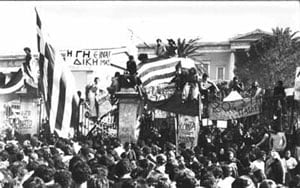
The Polytechnic uprising on 17 November 1973 was the turning point of the 1967 dictatorship. Although the students did not actually overthrow the regime, the intense and persistent reaction, the new voice heard from the Polytechnic and the earlier Law School sit-in, shook the Junta to its rotten core.
Greek junta, the end
In 1974 came the failed coup in Cyprus. The “guarantor” Turkey invaded the island to “protect” Turkish Cypriots. The ineffective reaction of the Greek and Greek Cypriot forces resulted in Turkey occupying almost half of Cyprus (almost all the island’s plains). There had been Turkish threats of invasion in 1964 and 1967, which makes it likely that Greece was under pressure not to react more dynamically in 1974. On the other hand, we must not forget that the Junta hesitated to arm the soldiers who had been called up, and in many cases, soldiers attacked ESA military policemen.
Ioannides, who had overthrown Papadopoulos after the Polytechnic affair, disappeared along with most of the Junta government. Senior Greek army officers, led by Gizikis, decided, given the impasse and their responsibility for the Cyprus fiasco, to restore democracy. Former Prime Minister Karamanlis was invited from Paris to form a government of national unity, and the seven years of the Junta came to an end on 24 July 1974.
The political period that followed is known as the “Metapolitefsi” (Μεταπολίτευση, change of polity), the Restoration of Democracy.
The Colonels’ junta, which ruled from April 1967 through July 1974, arrested a total of about 87,000 people (of whom 2,800 were tortured), and assassinated 88 persons.
Two videos about the events during the dictatorship in Greece
The following video is a slideshow presenting a brief history of the events that happened during the 7-years dictatorship in Greece (Greek junta).
The video begins with a logo of the KKE Communist Party of Greece. It is an effort of the slideshow creator to relae the uprising of November 17, 1973 with this particular party.
The historical truth is that there was no political party dictating the actions of those who participated in the Athens Polytechnic uprising in 1973.
This is a different slideshow with more photos from the November uprising against the Greek Junta, and the voice of Grigoris Bithikotsis singing “When they tighten their hand” (Οταν σφίγγουν το χέρι).
The lyrics come from the poem “Romiosini” by Yannis Ritsos and the music is by Mikis Theodorakis.
When they tighten their hand
it is for all humanity
that the sun shines
When they smile
a small swallow
emerges from their thick beards
When they die
life climbs uphill
with flags and drums.
Read more:
